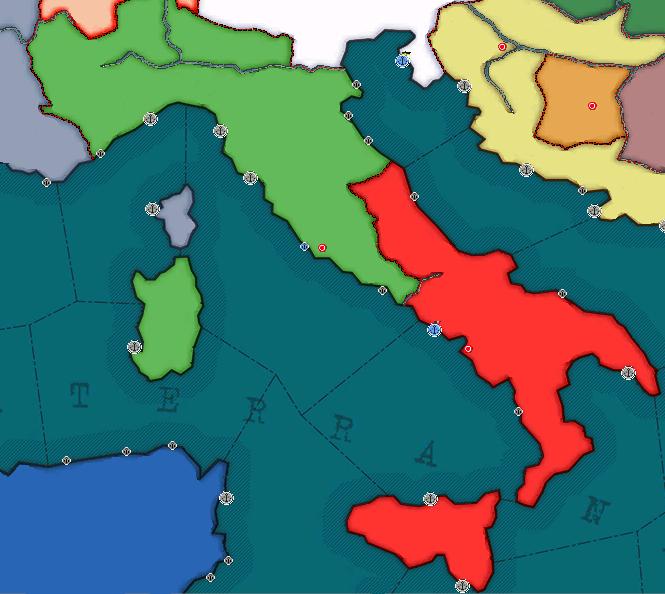Italian Federation
From Kaiserreich
| Line 12: | Line 12: | ||
However in the early 1930's this began to change when a group of radical cardinals gained political control of the Vatican. Aided by Pope Pius XI this group pushed for the centralisation and expansion of Papal power and control over the federation. During this period Austria was distracted by internal affairs, and was reluctant to intervene in favour of the status quo. Playing on the massive popular support the Pope had and setting this in the context of needing a great leader to guard Italian Federation from the dangers of Syndicalism the Pope emerged as the formal leader of northern Italy in 1935. | However in the early 1930's this began to change when a group of radical cardinals gained political control of the Vatican. Aided by Pope Pius XI this group pushed for the centralisation and expansion of Papal power and control over the federation. During this period Austria was distracted by internal affairs, and was reluctant to intervene in favour of the status quo. Playing on the massive popular support the Pope had and setting this in the context of needing a great leader to guard Italian Federation from the dangers of Syndicalism the Pope emerged as the formal leader of northern Italy in 1935. | ||
| + | |||
| + | [[Category:Countries]] | ||
Revision as of 17:33, 9 October 2007
Italian Federation is a country in southern Europe and dominates the northern half of the Apennine Peninsula. It is bordered by the Republic of the Sicilies in the south and Austria, Switzerland and the Commune of France in the north.
Politics
The Italian Federation is the nominal successor state of the Papal States. The Pope is the Head of State and the government is formed by cardinals and commoners alike.
History
The unified Italy created in 1861 lasted little more than half a century. Her decision to side with the Entente powers rather than her traditional Central European allies during the Great War proved to be a mistake to the highest order. In 1919 Italy collapsed under a Central Powers' offensive, and the combination of anger at Italy's betrayal and the Austrian desire for a divided Italian peninsula led to the break-up of Italy as a nation. After several years of Austrian occupation a number of separate duchies were established in the north, grouped into a federation nominally headed by the Papacy, but with great regional autonomy.
However in the early 1930's this began to change when a group of radical cardinals gained political control of the Vatican. Aided by Pope Pius XI this group pushed for the centralisation and expansion of Papal power and control over the federation. During this period Austria was distracted by internal affairs, and was reluctant to intervene in favour of the status quo. Playing on the massive popular support the Pope had and setting this in the context of needing a great leader to guard Italian Federation from the dangers of Syndicalism the Pope emerged as the formal leader of northern Italy in 1935.

